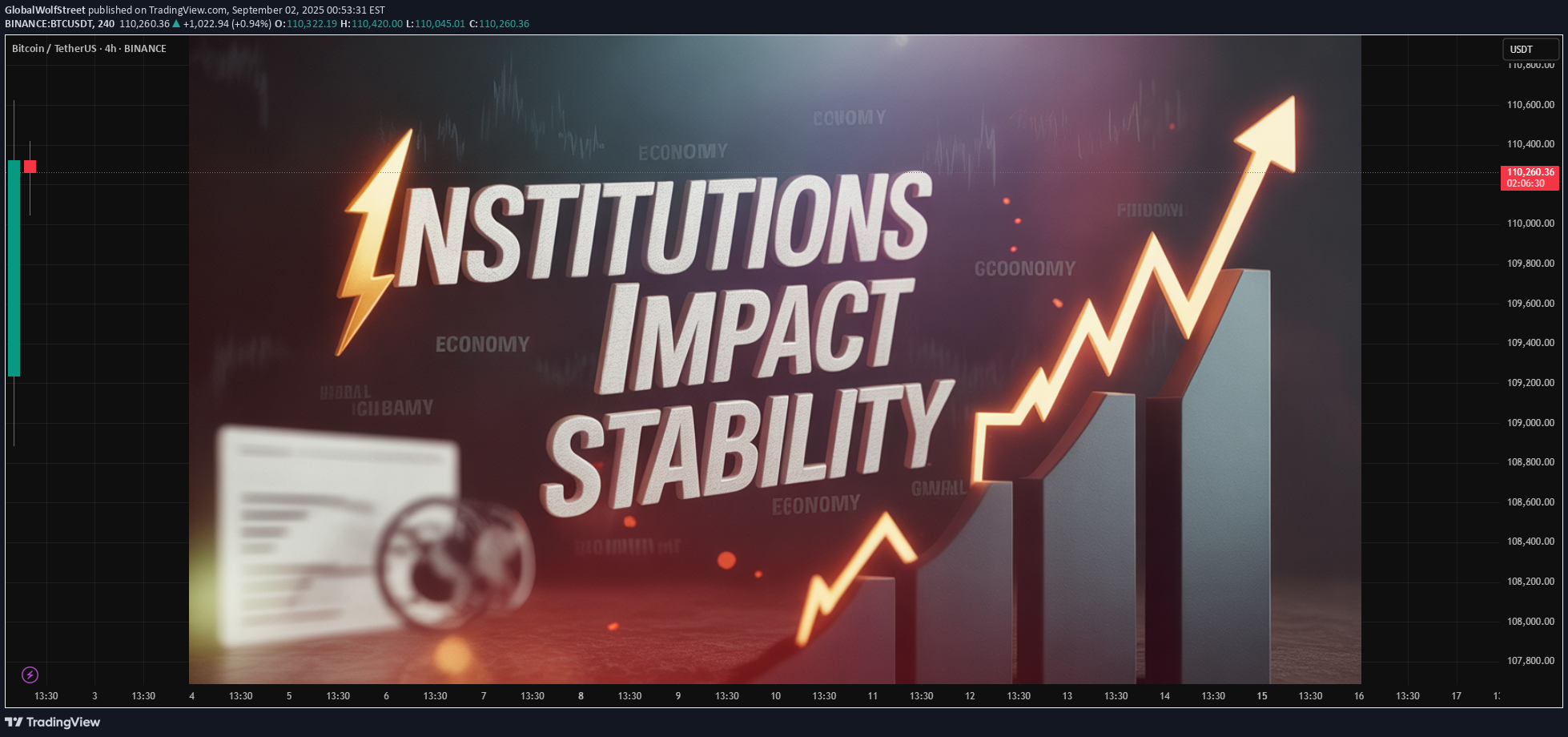تحلیل تکنیکال GlobalWolfStreet درباره نماد BTC در تاریخ ۱۴۰۴/۶/۱۱

1. Understanding Market Stability Before diving into the role of institutions, let’s first clarify what “market stability” means. Market Stability refers to the smooth functioning of financial systems, where prices of assets (stocks, bonds, currencies, commodities) reflect true economic fundamentals rather than being distorted by extreme volatility, panic, or speculation. A stable market promotes investment, trade, job creation, and long-term growth. On the other hand, instability—like currency crashes, hyperinflation, stock market collapses, or debt crises—leads to uncertainty, unemployment, and economic hardship. Factors that threaten market stability: Global Financial Crises (e.g., 2008 Lehman Brothers collapse). Currency Fluctuations (e.g., Asian Financial Crisis of 1997). Geopolitical Tensions (e.g., Russia-Ukraine war affecting energy markets). Trade Wars and Tariffs (e.g., US-China trade war). Pandemics and Natural Disasters (e.g., COVID-19 supply chain shocks). Without strong international cooperation, these risks can quickly spiral out of control. That’s where institutions step in. 2. Why International Institutions Matter Markets today are borderless: Investors in Tokyo hold American bonds. Indian companies raise money in London. European banks finance African infrastructure. Oil prices depend on OPEC+ decisions in the Middle East and Russia. Because no country can control global markets alone, international institutions act as referees, firefighters, and architects: Referees: They set rules for trade, finance, and investment. Firefighters: They provide rescue packages during crises. Architects: They build long-term frameworks for sustainable growth. 3. Key International Institutions and Their Roles in Market Stability A. International Monetary Fund (IMF) Founded: 1944 at Bretton Woods Conference. Role: To ensure exchange rate stability, provide short-term financial assistance, and monitor global economies. How it stabilizes markets: Emergency Loans – Offers bailout packages to countries facing currency crises (e.g., Greece during the Eurozone crisis). Surveillance – Publishes reports on global economic outlook and warns about risks. Capacity Building – Provides technical advice on monetary policy, taxation, and banking reforms. Case Example: During the 1997 Asian Financial Crisis, the IMF intervened with over $100 billion in rescue funds for South Korea, Indonesia, and Thailand. B. World Bank Group Founded: 1944, alongside the IMF. Role: Provides long-term loans for infrastructure, poverty reduction, and sustainable development. Impact on stability: Helps developing countries build stable economies through investment in roads, energy, education, and healthcare. Prevents political unrest and financial volatility by addressing root causes of instability—poverty and inequality. Example: Post-war reconstruction of Europe and Japan, funded by World Bank loans, set the stage for decades of global growth. C. Bank for International Settlements (BIS) Founded: 1930, oldest financial institution. Role: Acts as the “bank for central banks.” How it stabilizes markets: Facilitates cooperation among central banks like the US Federal Reserve, European Central Bank (ECB), Reserve Bank of India, etc. Sets global banking rules like Basel Accords, which determine how much capital banks must hold to withstand crises. Provides early warnings about systemic risks. Example: After the 2008 crisis, BIS strengthened banking regulations to prevent excessive risk-taking. D. World Trade Organization (WTO) Founded: 1995, successor of GATT. Role: Oversees global trade rules to ensure free and fair trade. Contribution to stability: Reduces trade disputes that could escalate into economic wars. Provides a legal framework for resolving conflicts (e.g., US vs EU over aircraft subsidies). Promotes predictable markets for exporters and importers. Without WTO, trade disputes could spiral into chaotic tariff wars, destabilizing markets worldwide. E. United Nations (UN) Though not a financial institution, the UN ensures political stability, which indirectly supports markets. Its agencies—UNDP, UNCTAD, UNEP—work on sustainable development, investment flows, and environmental issues. Peacekeeping operations help restore stability in war-torn regions, creating safer conditions for markets. F. Regional Institutions European Central Bank (ECB) – Maintains eurozone stability. Asian Development Bank (ADB) – Funds Asian infrastructure. African Development Bank (AfDB) – Strengthens African markets. BRICS Bank (NDB) – Alternative funding for emerging economies. These regional players complement global institutions by addressing local challenges. 4. Tools Used by International Institutions for Market Stability Financial Assistance – Bailouts, emergency funds, and structural adjustment loans. Regulatory Frameworks – Basel Accords (banking), WTO trade rules. Surveillance and Monitoring – IMF’s World Economic Outlook, BIS reports. Capacity Building – Training governments in fiscal and monetary policy. Dispute Resolution – WTO’s legal panels. Crisis Coordination – G20 and IMF coordinate during global shocks. 5. Case Studies: Institutions in Action 1. The 2008 Global Financial Crisis IMF, BIS, and G20 coordinated liquidity injections. Central banks cut interest rates in unison. WTO helped prevent protectionist trade measures. 2. COVID-19 Pandemic IMF approved emergency loans to over 85 countries. World Bank mobilized billions for vaccine distribution. WTO worked to ensure supply chain flow of essential goods. 3. Eurozone Debt Crisis ECB played a key role by buying government bonds. IMF provided bailout packages to Greece, Portugal, and Ireland. These examples show how international cooperation prevents local crises from turning into global meltdowns. 6. Challenges Faced by International Institutions Political Influence – Rich countries dominate decision-making (e.g., US influence in IMF). Sovereignty Concerns – Countries resist outside intervention in domestic policies. Inequality of Benefits – Critics argue that IMF and World Bank impose harsh austerity measures that hurt the poor. Global Power Shifts – Rise of China, BRICS challenges Western-dominated institutions. Technology and Crypto – Digital currencies and decentralized finance are outside current frameworks. 7. The Future of International Institutions in Market Stability To remain effective, institutions must adapt: Greater Inclusiveness: Give emerging markets more voting power. Focus on Sustainability: Climate finance and green bonds should be prioritized. Digital Regulation: Create rules for cryptocurrencies and AI-driven trading. Crisis Preparedness: Build faster response mechanisms for pandemics, cyberattacks, and climate shocks. Multipolar World: Balance power between the US, EU, China, India, and other rising economies. Conclusion International institutions are the backbone of market stability in an increasingly interdependent world. While they face criticism for being slow, biased, or outdated, their importance cannot be denied. From the IMF’s financial lifelines to the WTO’s trade rules, from BIS banking regulations to World Bank’s infrastructure funding, these organizations ensure that crises do not escalate into global catastrophes. As globalization deepens and new risks emerge—climate change, cyber threats, digital currencies—the role of international institutions will become even more vital. The challenge lies in reforming them to be more inclusive, transparent, and forward-looking. Only then can they continue to safeguard global markets and promote sustainable prosperity.
